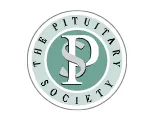GUIDELINES & POSITION STATEMENTS
PITUITARY SOCIETY GUIDELINES
* APPLICABLE TO OPEN ACCESS STATEMENT
Consensus on Diagnosis & Management of Cushing's Disease *
A GUIDELINE UPDATE
Cushing's disease requires accurate diagnosis, careful treatment selection, and long-term management to optimize patient outcomes. The Pituitary Society convened a consensus workshop comprising more than 50 academic researchers and clinical experts to discuss the application of recent evidence to clinical practice.
Pituitary Neoplasm Nomenclature Workshop *
DOES ADENOMA STAND THE TEST OF TIME?
The WHO Classification of Endocrine Tumors designates pituitary neoplasms as aden- omas. Some stakeholder groups have been concerned about a proposed nomenclature change to pituitary neuroendocrine tumors (PitNETs). The Pituitary Society coordinated the Pituitary Neoplasm Nomenclature (PANOMEN) workshop to address the topic.
An International Perspective on Endocrine Management of Patients Undergoing Transsphenoidal Surgery for Pituitary Adenomas *
PITUITARY SOCIETY DELPHI SURVEY
Purpose In adults and children, transsphenoidal surgery (TSS) represents the cornerstone of management for most large or functioning sellar lesions, with the exception of prolactinomas. Endocrine evaluation and management are an essential part of perioperative care. However, the details of endocrine assessment and care are not universally agreed upon.
Operative Workflow in Endoscopic Transsphenoidal Pituitary Adenoma Resection *
PITUITARY SOCIETY EXPERT DELPHI CONSENSUS
Purpose: Surgical workflow analysis seeks to systematically break down operations into hierarchal components. It facilitates education, training, and understanding of surgical variations. There are known educational demands and variations in surgical practice in endoscopic transsphenoidal approaches to pituitary adenomas. Through an iterative consensus process, we generated a surgical workflow reflective of contemporary surgical practice.
A Pituitary Society Update to Acromegaly Management Guidelines *
ABSTRACT
Guidelines and consensus statements ensure that physicians managing acromegaly patients have access to current information on evidence-based treatments to optimize outcomes. Given significant novel recent advances in understanding acromegaly natural history and individualized therapies, the Pituitary Society invited acromegaly experts to critically review the current literature in the context of Endocrine Society guidelines and Acromegaly Consensus Group statements. This update focuses on how recent key advances affect treatment decision-making and outcomes and also highlights the likely role of recently FDA-approved therapies as well as novel combination therapies within the treatment armamentarium.
Pituitary Disease Management and Patient Care Recommendations During the COVID-19 Pandemic *
AN INTERNATIONAL PERSPECTIVE
Severe acute respiratory syndrome coronavirus 2 (SARS-CoV-2), the viral strain that has caused the coronavirus disease 2019 (COVID-19) pandemic, has presented healthcare systems around the world with an unprecedented challenge. In locations with significant rates of viral transmission, social distancing measures and enforced ‘lockdowns’ are the new ‘norm’ as governments try to prevent healthcare services from being overwhelmed.
A Tale of Pituitary Adenomas: to NET or not to NET
PITUITARY SOCIETY POSITION STATEMENT
Anterior pituitary tumors arising from oral ectoderm-derived differentiated hormone-expressing lineages are classified according to cell type, size, location, secretory function, and neoplastic behavior. The pathological classification of pituitary tumors has been driven by advances in physiology, cell biology, and genetics.
Physicians' Awareness of Gadolinium Retention and MRI Timing Practices in the Longitudinal Management of Pituitary Tumors
A PITUITARY SOCIETY SURVEY
Abstract. Purpose In view of mounting attention related to possible brain retention of gadolinium-based contrast agents (GBCAs) in patients with normal renal function, our purpose was to detail results from a survey of pituitary experts to assess: 1) the timing interval and frequency of pituitary magnetic resonance imaging (MRI) following surgical and/or medical and/or radiation therapy of pituitary tumors, 2) awareness of the types of GBCAs used and their possible safety issues.
Criteria for the Definition of Pituitary Tumor Centers of Excellence (PTCOE) *
A PITUITARY SOCIETY STATEMENT
Introduction. With the goal of generating uniform criteria among centers dealing with pituitary tumors and enhancing patient care, the Pituitary Society decided to generate criteria for developing Pituitary Tumors Centers of Excellence (PTCOE).
OPEN ACCESS
These articles are licensed under a Creative Commons Attribution 4.0 International License, which permits use, sharing, adaptation, distribution, and reproduction in any medium or format, as long as you give appropriate credit to the original author(s) and the source, provide a link to the Creative Commons license, and indicate if changes were made. The images or other third-party material in these articles are included in the Creative Commons license unless indicated otherwise in a credit line to the material. If material is not included in the Creative Commons license and your intended use is not permitted by statutory regulation or exceeds the permitted use, you will need to obtain permission directly from the copyright holder. To view a copy of this license, visit http://creativecommons.org/licenses/by/4.0/.




